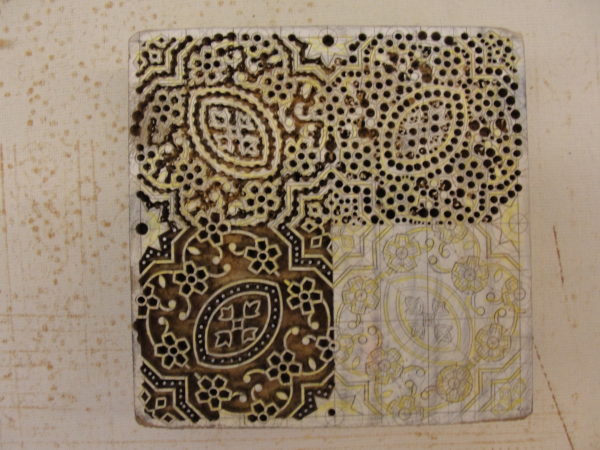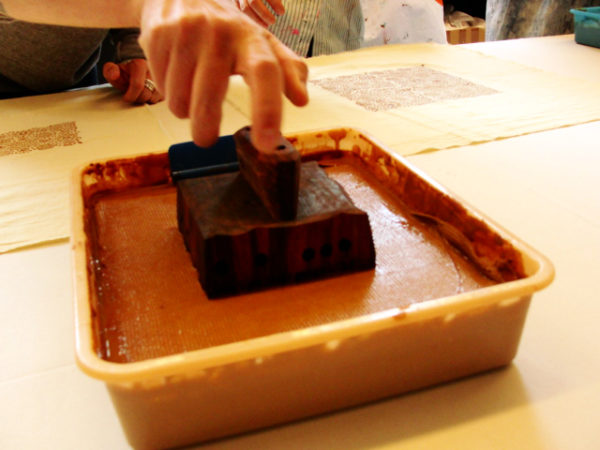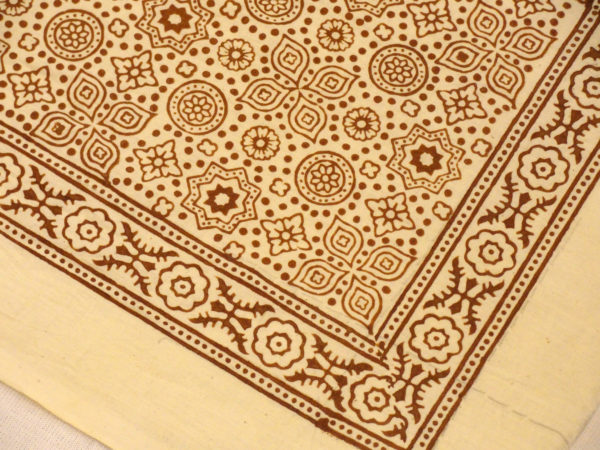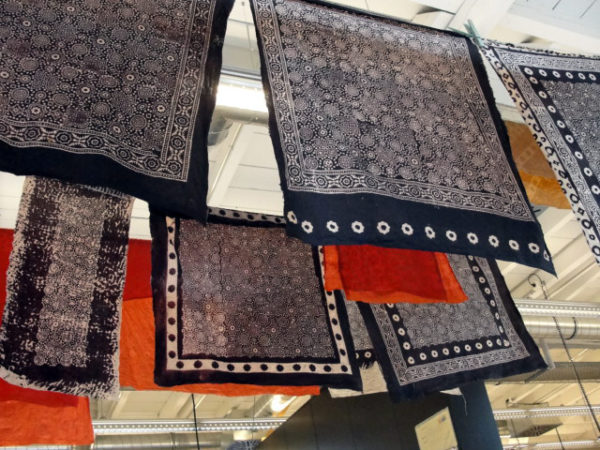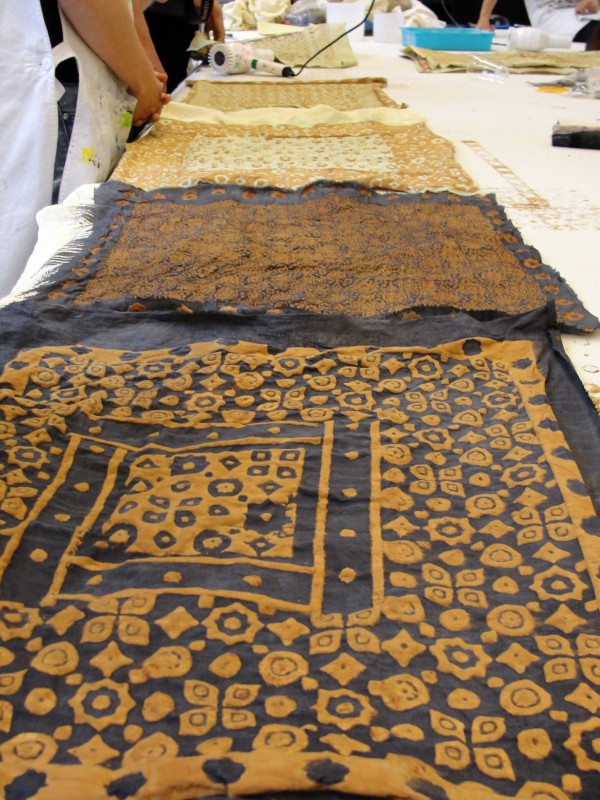Indigo and Block Printing Workshop at HSLU
From June 4th to 6th we had the chance to participate in an Indigo dyeing and block printing workshop at Hochschule Luzern.
The seminar was conducted by Sufiyan and Shivani who came all the way from India to teach us a thousand-year-old technique used to print and colour traditional ajrakh cloths.
First, we learned how to de-starch cotton fabrics with camel dung and soda ash.
Small wooden blocks carved by specialized artisans are used to print the cotton fabric with a resist paste.
The pastes can contain several different ingredients such as gum arabic, lime, clay, alum and rusted iron. Each paste will produce a colour according to the chemical reaction produced when boiled with other substances.
The paste has a yoghurt consistency and is placed in a plastic container. To ensure that the raised parts of the stamp get the right amount of paste, a “block-pad” made of straws and a yute fabric are placed on the paste surface.
The printed cloths are hung to dry and then dipped into the indigo vat.
The blue dye was made with indigo powder, hydrosulfite (a reducing agent) and lime.
The fabric is hung to dry again and then rinsed several times.
After that, we over-dyed them with madder red in order to obtain a three colour printed fabric.
Another method we tried was printing with paste and then painting the cloths using shoe brushes with a mix of tamarind seed flour and iron rust. The fabric turns gray almost immediately and is hung to dry. Then it is washed in warm water to remove the paste and finally boiled for 30 minutes in a tamarix solution to fix the colour.
For more detailed information about the whole process, check Ruth Clifford’s blog Travels in Textiles.


